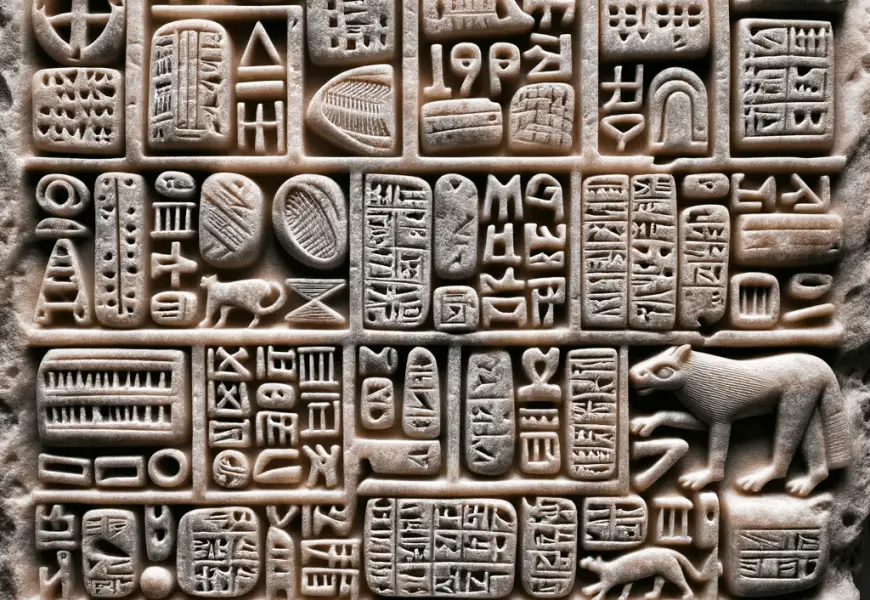ORIGINS AND GEOGRAPHIC DISTRIBUTION
The Canaanites, who spoke an ancient Semitic language, were the indigenous inhabitants of present-day Israel, Palestine, Lebanon, and portions of Syria and Jordan. The civilization in question, which originated in the region formerly known as Canaan, was created in the year 3000 BCE. This establishes it as one of the most influential countries in the ancient Near East.
- Religious Practices: The Canaanite religious pantheon exhibited polytheistic tendencies, comprising deities including Asherah (a mother goddess figure), Baal (associated with rain and fecundity), and El (regarded as the paramount deity). Religious observances were elaborate, comprising various ceremonial activities such as animal sacrifices and seasonal celebrations, all inextricably linked to their rural way of life.
- Language and Script: The Canaanites made substantial contributions to linguistics. The evolution of their proto-Canaanite script into the Phoenician alphabet is thought to have significantly influenced the subsequent Greek and Latin alphabets.
- Artistic Endeavors: Canaanite settlements have produced architectural and artistic artifacts demonstrating their proficiency in developing sophisticated infrastructures for fortified cities. The intricately patterned pottery, handicrafts, and jewelry they produce testify to their creative aptitude.
CONTRIBUTIONS TO THE ANCIENT WORLD:
- Trade Networks: The Phoenicians, who lived close to the Canaanites along the coast, played a significant role in establishing vast trade networks that facilitated the exchange of materials and culture among ancient civilizations in Mesopotamia, Egypt, and the Aegean.
- Literacy and Script: The Phoenician alphabet assumed the place of the Canaanite script, which was instrumental in the worldwide progression of alphabetic writing systems.
ENGAGEMENTS WITH ADJACENT CIVILIZATIONS:
EGYPT:
- Canaan and Egypt engaged in frequent interactions due to their proximity. The strategic location of the region, specifically the Nile Delta and Canaanite coastal plains, facilitated unimpeded commerce and mobility.
- Egyptians and Canaanites exchanged wood, oil, and wine for grain, fabric, and luxury items, respectively.
- The political dynamics between Canaan and Egypt extended beyond commerce, characterized by fluctuating cooperation and supremacy. The Egyptian Pharaohs, particularly in the Middle and New Kingdom eras, endeavored to establish dominion over Canaan due to its strategic importance in opposition to emerging powers in the Near East. Consequently, Canaanite municipalities occasionally paid homage to the authorities of Egypt.
- Archaeological evidence from the 14th century BCE indicates that Egyptian and Canaanite cultural exchanges were apparent in religious practices, artistic expression, and hieroglyphics.
THE HITTITE EMPIRE
The Hittite Empire in Anatolia (present-day Turkey) maintained regular diplomatic relations with Canaan due to their ambitious expansionist goals.
- Geopolitical Discourse: The Hittite ambitions to expand their rule towards the south frequently positioned Canaan during confrontations with neighboring regional powers such as Egypt.
- Diplomacy: The Hittite records attest to diplomatic engagements and agreements between the Hittite Empire and Canaanite city-states, notwithstanding intermittent hostilities.
THE ISRAELITES:
The relationship between the Israelites and the Canaanites continues to be disputed in archaeological and historical discourse.
- The Biblical Account: The rapid victory portrayed in the Book of Joshua describes the Israelite conquest of Canaan under the leadership of Joshua.
- Archaeological Discoveries: In contrast to the biblical narrative of a swift conquest, archaeological findings indicate a more gradual process of Israelite settlement in the highlands of Canaan, as several Canaanite cities exhibited no indications of devastation during the conflict. The scholarly consensus points to the Israelites and Canaanites engaging in an extended cultural exchange and cohabitation period.
THE ARCHAEOLOGICAL UNVEILING: AN ENHANCED EXAMINATION OF CANAANITE LIFE
UGARIT
- Ugarit, currently located in Ras Shamra, Syria, is a significant archaeological site tied to Canaanite culture.
- The Ugaritic Tablets, a collection of clay tablets engraved in the Ugaritic script, provide invaluable knowledge of the Canaanite language, everyday existence, commerce, diplomacy, and legal structures.
- Ugarit has contributed comprehensive religious texts, encompassing narratives such as the Baal Cycle, thereby illuminating the spiritual environment of Canaanite society.
HAZOR
- Archaeological evidence from Hazor, a once-dominant metropolis in Canaan, indicates the existence of a long-standing urban settlement.
- Hazor’s fortifications, consisting of sturdy walls and turrets, are a tangible manifestation of the region’s critical strategic position and the imperative need for formidable defenses.
MEGIDDO:
- Megiddo, also called the biblical Armageddon, occupied a pivotal location along the ancient trade route that linked ancient Egypt and Mesopotamia.
- The progressive stratification of urban development at Megiddo indicates the city’s lasting importance and the heterogeneous civilizations that have called it home for millennia.
CONCLUSION:-
In conclusion, the record of ancient Near Eastern history is replete with the enduring impact of the Canaanites. The lasting effects of their contributions, which encompassed cultural exchanges, linguistic progress, and commerce, emphasize their critical significance in molding the historical and cultural fabric of the area.











